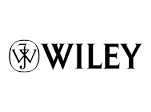Resource information
The main objective of this research was to compare the suitability of land for surface and drip irrigation methods according to a parametric evaluation system in the plains west of the city of Shush, in south‐west Iran. After analysing and evaluating soil properties, suitability maps were generated for both methods by means of remote sensing (RS) and a geographic information system (GIS). The results showed that 9031 ha (21.5%) of the studied area was highly suitable for surface irrigation methods, whereas 32 500 ha (77.5%) of the study area was highly suitable for drip irrigation methods. Also some land units covering an area of 2111 ha (5.0%) were not suitable to be used for surface irrigation systems. One land unit with an area of 724 ha (1.7%) was classified as not suitable for drip irrigation systems. Moreover, the results indicated that a larger amount of the land (30 100 ha - 71.8%) can be classified as more suitable for drip than surface irrigation. Ultimately, the application of a drip irrigation system was suggested as the best method to be applied to the study area. The main limiting factors in using surface irrigation methods in this area were sandy soil texture and slope; moreover, for drip irrigation methods, the main limiting factor was soil calcium carbonate. Copyright © 2009 John Wiley & Sons, Ltd.



